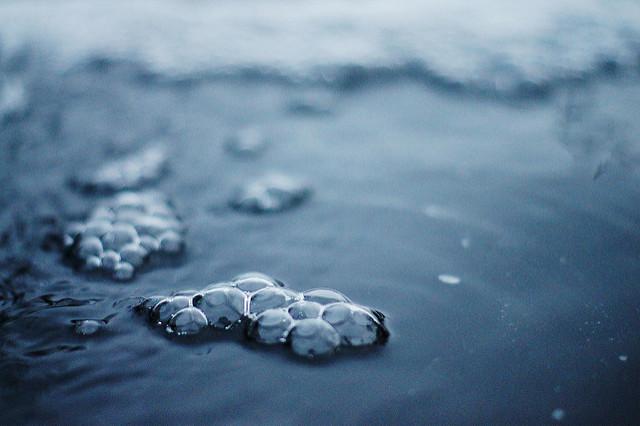Future submarine: coming up for air?
Posted By Andrew Davies on February 5, 2016 @ 06:00
The future submarine project is heating up, with the government due to choose from the three competing bidders in a few months’ time. All of the current press attention seems to be focused on the politics of the build, such as whether the Americans have a preference for the Japanese option [2], or the local industrial angle [3].
Perhaps it’s not too surprising that there hasn’t been a lot of discussion about some of the design aspects of the future boats. After all, submarine design is a pretty arcane topic for the mainstream press. But getting the design parameters right is critical for a deliverable project, and it’s worth understanding the key issues, even if that requires some ‘techie talk’.
One of the drivers of the design is the required range and endurance of the boats, which in turn impacts on choices for the propulsion system. Detailed Collins specifications are classified, but missions can last 60 days or more. At an average transit speed of eight knots (typical of a large diesel–electric boat), a boat can patrol for about 30 days at 3,000nm from base. The 2009 White Paper talked of extending the Collins range and endurance but there’s since been a scaling back of ambition [4], to a submarine with similar speed and endurance to the Collins, but with better stealth, weapons and sensors.
That’s going to be challenging enough. None of the three competitors has a boat that meets our needs ‘out of the box’. Japan’s Soryu class [5] is designed for a submarine concept of operations of relatively short patrols at modest distances from base. The two European firms are offering new designs. Germany’s TKMS has concept designs for a ‘large ocean going submarine’ and a Type 216 [6], both of which draw on experience with the smaller Types 212 and 214. But both new concepts are significantly larger, which has implications for engine capacity and energy generation and storage. France’s DCNS has proposed a scaled-down version of the Barracuda SSN [7], with its nuclear propulsion replaced by a diesel-electric system.
For a boat that’ll be among the largest conventional submarines, the propulsion system will be critical. The Germans have the same challenge the Swedes faced in designing the Collins—scaling up a successful design and providing it with adequate power. The French have to give up the essentially unlimited power of a nuclear reactor and compensate with diesels and batteries (and have also suggested replacing the propeller with a pump-jet [8]). The Japanese seem to have about the right sized solution already, but it’s not clear whether they can meet the range and endurance requirements.
Going a step further into the detail, two related points of interest will be whether the chosen solution has an air-independent propulsion (AIP) system and which type of battery is chosen. It once seemed a no-brainer that the future submarine would have AIP [9], as an increasingly challenging ASW environment [10] puts a premium on sustained quiet operations. AIP reduces the need to run the diesels to charge the batteries (‘snorting’), which produces acoustic and thermal signatures that risk compromising the position of the boat.
To give an example of the possible advantage of AIP, a Type 214 submarine can run at 4 kts on batteries for about 60 hours before it needs to snort. With AIP, the endurance can be over a month at the same speed (see Figure 2 here [11]). Again, there’s a trade-off, as the endurance falls off quickly with speed (see Figure 3 of the previous link), and AIP isn’t suitable for a high-speed dash should circumstances require it. Nor is AIP a free good for the designer. It allows extended periods of quiet operation, but it’s also hungry for space, having a relatively low energy density (4.5 MJ/L for fuel cells, for example) compared to diesel fuel (35 MJ/L). For a given submarine size, the incorporation of AIP reduces overall range and endurance.
Modern battery technology might provide an alternative solution. In the past, the only practical energy storage solution in conventional submarines was banks of lead acid batteries. They’re well-understood and reliable, but they’re also heavy and have a low energy density (typically around 0.4 MJ/L). With AIP systems up to a factor of ten more efficient in storage, the tactical advantages of AIP outweighed the penalty of reduced diesel storage. But modern lithium ion batteries can achieve much better energy densities than their lead acid predecessors (up to 2.4 MJ/L [12] (PDF), though probably less in a submarine for safety reasons, at least for now), as well as being much lighter for a given volume.
While lithium ion batteries can’t (yet?) match AIP for energy storage efficiency, the difference is much less than with older battery technology. Provided that we’re convinced of their reliability and safety [13], it’ll be tempting to leave out AIP, and use the space and weight freed up to carry more diesel, extra mission payload, or both.
This post expands on points made in an earlier piece for RUSI Defence Systems [14].
Article printed from The Strategist: https://aspistrategist.ru
URL to article: /future-submarine-coming-up-for-air/
URLs in this post:
[1] Image: https://aspistrategist.ru/wp-content/uploads/2016/02/4294875436_305b8ac6ec_z.jpg
[2] whether the Americans have a preference for the Japanese option: http://www.theaustralian.com.au/national-affairs/defence/us-eyes-strategic-benefits-from-japan-submarines-deal/news-story/96365a6e92739c6cb9dee5ff6a907ff1
[3] the local industrial angle: http://www.smh.com.au/federal-politics/political-news/german-shipbuilder-thyssenkrupp-would-use-australia-as-regional-hub-under-submarine-contract-20151213-glmgoy.html
[4] scaling back of ambition: https://aspistrategist.ru/a-realistic-future-submarine/
[5] Soryu class: http://www.naval-technology.com/projects/sssoryuclasssubmarin/
[6] Type 216: https://www.thyssenkrupp-marinesystems.com/en/hdw-class-216.html
[7] a scaled-down version of the Barracuda SSN: http://en.dcnsgroup.com/news/dcns-unveils-shortfin-barracuda/
[8] replacing the propeller with a pump-jet: http://www.navyrecognition.com/index.php/news/naval-exhibitions/pacific-2015-naval-show-daily-news/3161--pacific-2015-dcns-showcased-the-shortfin-barracuda-block-1a-for-sea1000-submarine-program.html
[9] future submarine would have AIP: https://aspistrategist.ru/air-independent-propulsion-is-a-must-for-australias-next-submarines/
[10] increasingly challenging ASW environment: https://aspistrategist.ru/chinas-emerging-undersea-capability-and-the-implications-for-australias-future-submarine/
[11] here: http://www.bmtdsl.co.uk/media/6097999/BMTDSL-Sub-Power-and-propulsion-Confpaper-UDTEurope-Jun08.pdf
[12] 2.4 MJ/L: http://www.batteryspace.com/prod-specs/NCR18650B.pdf
[13] safety: http://batteryuniversity.com/learn/article/safety_concerns_with_li_ion
[14] earlier piece for RUSI Defence Systems: https://rusi.org/publication/rusi-defence-systems/down-underwater-australia%E2%80%99s-submarine-replacement-challenge
Click here to print.
